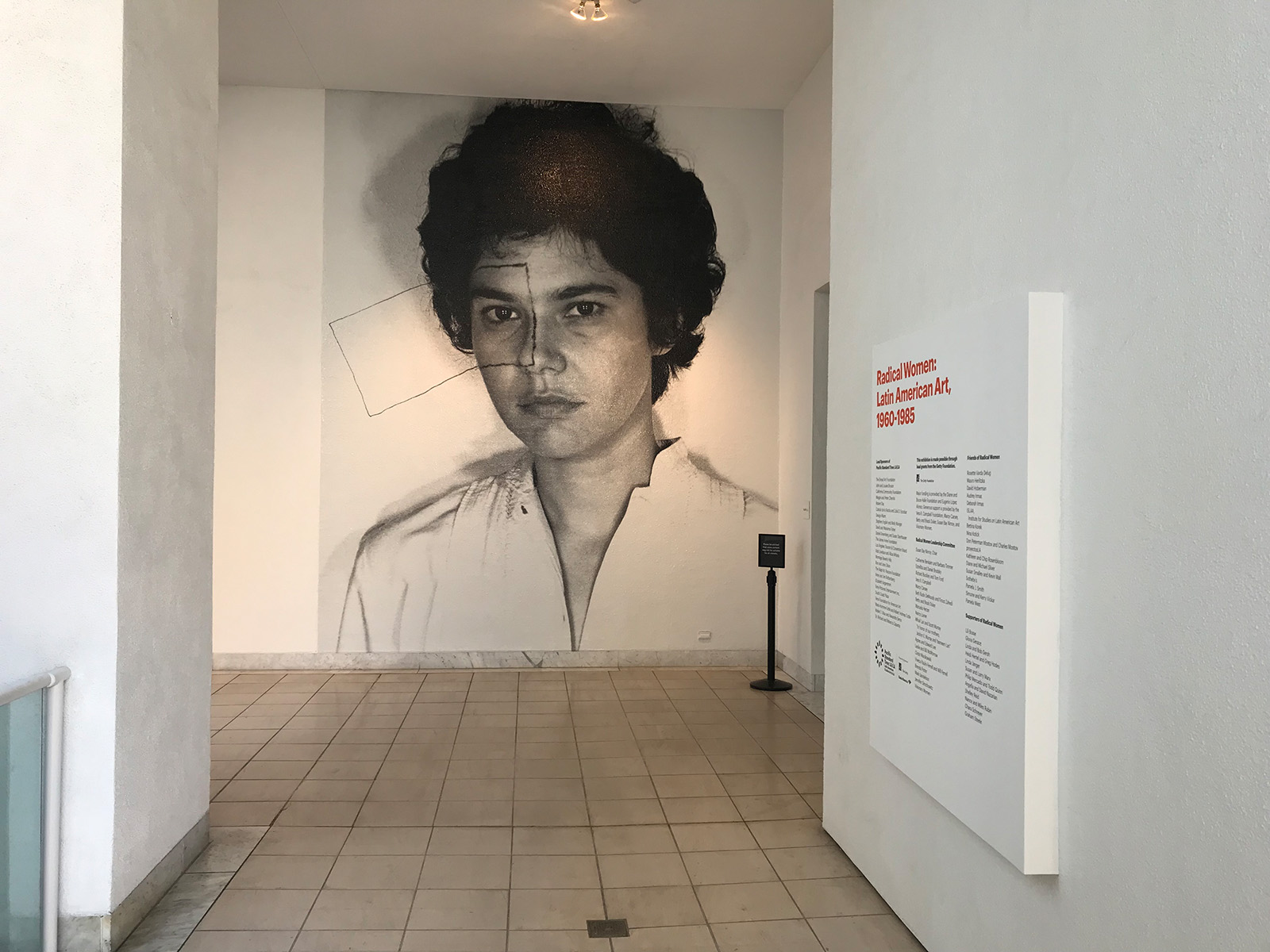The Quad: ‘Radical Women’ exhibit sends strong messages on power of women of color

“Radical Women: Latin American Art, 1960-1985” is open at the Hammer until Dec. 31.
(Lionel Deatherage/Daily Bruin)
By Lionel Deatherage
Nov. 20, 2017 7:03 p.m.
Perhaps it is impossible to teach somebody how to care for and accept others, or to see past gender or skin color. But the Hammer Museum’s latest exhibit tries to pierce through the intolerance permeating our society.
Through the voices of a different time and of foreign countries, “Radical Women: Latin American Art, 1960–1985” makes a case for women. The exhibit, on display for the next six weeks until Dec. 31 at the Hammer Museum, shows anyone willing to observe that art matters. People of color matter. Women matter.
The key issues of “Radical Women” can be summarized with two thematic questions. The first: What is the place of Latin American female artists in the canon of contemporary art as a whole? Despite the wealth of stunning pieces I saw in my visit to the exhibit, I wouldn’t have recognized a single work or artist on display from any of my prior cultural knowledge. There is no Barbara Kruger to see there, nor is there any Kusama or Abramović. Therein lies the second issue “Radical Women” seeks to address: Why aren’t these brilliant artists more well-known?
If the exhibit makes its viewers consider the representative plight of female artists of color, it also makes us contemplate the power of art to impart a message, a point-of-view, a feeling of one’s place in a socioeconomic hierarchy.
All of the installations “Radical Women” has to offer – the canvases, dramatic sculptures and video pieces – come together to form one of the most gripping encounters I’ve ever had with feminism and the issues facing women and people of color. Many of the popular contemporary art museums in Los Angeles, by design or otherwise, have fallen into the trap of becoming Instagram fodder, of becoming something to do rather than something to see and feel. This exhibit is contemporary art with a message, and it’s an important one to behold.
The “radical” in the title of the exhibit has to do with its showcasing of a deconstruction of women’s bodies, both in terms of their form and in terms of the politics and expectations placed upon them. Think of the ways in which some men oppress women through sociopolitical control and sexual fantasy. Consider the fact that laws regulating women’s bodies are created primarily by men; consider the way some men use constructed notions like “virginity” and “purity” to police women’s lives.
These artists repurpose their own bodies as a form of resistance to these kinds of things – to systemic and everyday sexism, as well as the dictatorial climate that plagued South America in the latter part of the 20th century.
The exhibit is divided into different sections. Some of them focus on body image, others on political climate; there are also feminist pieces that analyze the role of women in Latin American communities – the value placed upon roles like “housewife” or “mother.” The section titled “The Erotic” is particularly outstanding.
The most striking piece in the entire exhibit was “Autorretrato. Estructura. Informe.” – a mixed-media installation by Teresa Burga located in the “Self-Portrait” section. In a closed-off room, no more than 10 or 12 feet across, viewers listen to the artist’s heartbeat. A light flashes in time with the beating. An electrocardiograph is pasted on the wall, along with diagrams of very, very specific measurements of Burga’s body – a copy of her dental records, the lengths of things like her forehead and nose.
It’s very disturbing to experience another person’s body in this way. The message about our bodily relationship with technology is, perhaps, ahead of its time. The message about the dissection of women, about the consumption of and gaze upon their body parts, is universal.
Why, then, is this exhibit essential viewing for anybody who can make it? It has to do, again, with empathy, experience and the political climate we find ourselves in.
“To produce changes through thought” is the title of one of the works on display. The phrase stuck out at me as something wholly indicative of the potential of these women artists to affect social change, not only in the contemporary period that the art was produced, but as well as here, in the now.
It may be that there has never been a better time to be a woman, or queer, or of color, but the ongoing struggle against patriarchy and marginalization is more visible than ever. A real estate magnate brags about grabbing at women’s genitals and is elected president. A famous movie producer’s best films are built upon decades of alleged sexual assault.
A viewing of “Radical Women” is a beautiful crash-course in feminism, Latin American history and the power of women’s voices and bodies through art. Viewers will come away with a better understanding of what sexism is, what racism is. The world will be a better place for it.
Regardless of your gender or political affiliation, you should see this exhibit before it leaves Los Angeles.


